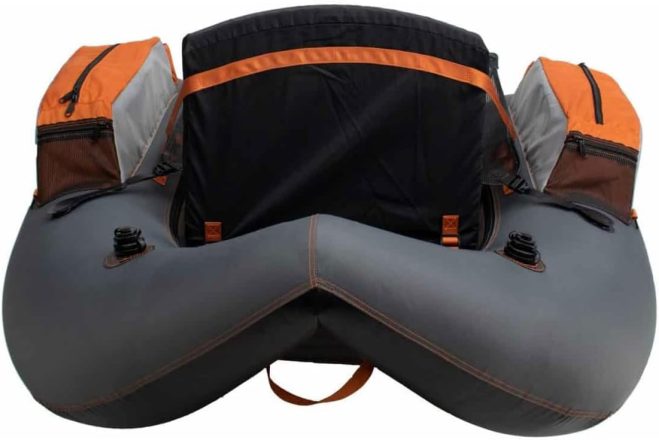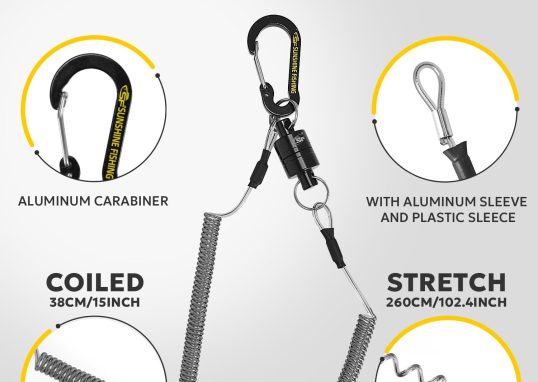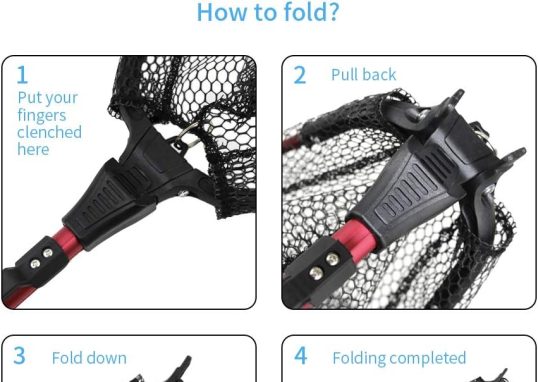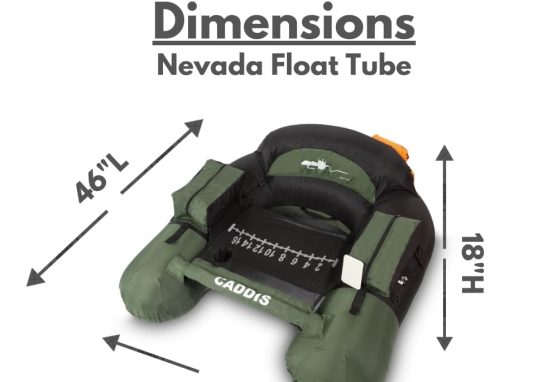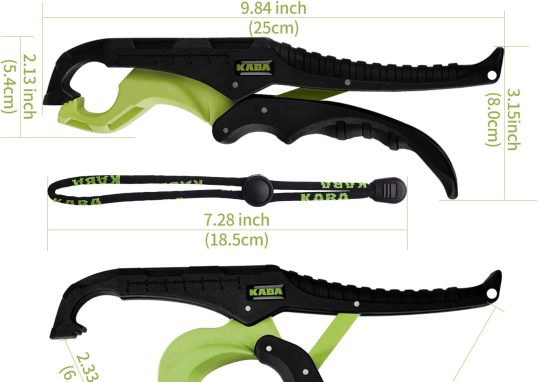
Fishing tubes offer a portable, cost-effective, and immersive way to fish, allowing anglers to access hard-to-reach spots and enjoy a unique fishing experience. Fishing is an age-old practice that has evolved significantly over the centuries. Among the numerous advancements and innovations, the fishing tube stands out as a versatile and efficient tool that has revolutionized the fishing experience for both amateurs and professionals. This comprehensive guide delves into the intricacies of fishing tubes, exploring their history, design, usage, benefits, and tips for choosing the right one.
Types of Fishing Tubes
Float Tubes: Also known as belly boats, float tubes are inflatable, donuts-shaped tubes that allow anglers to float on the water’s surface. They are ideal for fishing in calm lakes, ponds, and slow-moving rivers.
Pontoon Tubes: Pontoon tubes are larger and more stable than float tubes, featuring two inflatable pontoons connected by a rigid frame. They offer greater stability and can handle rougher water conditions. Pontoon tubes often come with additional features like oar locks, motor mounts, and ample storage space.
Kayak Tubes: These are hybrid designs that combine the stability of a kayak with the portability of a tube. Kayak tubes are ideal for anglers who want the maneuverability of a kayak without the bulk.
Canoe Tubes: Similar to kayak tubes, canoe tubes offer a blend of stability and portability. They are slightly larger and provide more storage space, making them suitable for longer fishing trips.
Click for fishing line & Tube
Historical Context and Evolution
The concept of using a tube in fishing isn’t entirely new. Historically, indigenous cultures across various continents used simple, hollowed-out plant stems or bamboo as primitive fishing tubes. These early tools were primarily used to catch small fish in shallow waters or streams. The method was straightforward but effective, relying on the natural curiosity of fish and the simplicity of the tube design.
With the advent of modern materials and engineering, the fishing tube has undergone significant transformations. These advancements made fishing tubes accessible to a broader audience and increased their effectiveness in various fishing environments.
Design and Construction
A fishing tube’s design is crucial to its performance. Modern fishing tubes are typically constructed from durable, lightweight materials such as PVC, polyethylene, or composite materials. The choice of material affects the tube’s buoyancy, durability, and ease of use.
- Material: High-density polyethylene (HDPE) and polyvinyl chloride (PVC) are popular choices due to their resistance to water, corrosion, and UV damage. Fiberglass tubes, while more expensive, offer superior strength and longevity.
- Shape and Size: Fishing tubes come in various shapes and sizes, each suited to different fishing conditions. Cylindrical tubes are common for general-purpose fishing, while more specialized shapes, like tapered or flared tubes, are designed for specific fish species or environments. The size of the tube affects its buoyancy and the type of fish it can effectively catch. Smaller tubes are ideal for light tackle and small fish, whereas larger tubes can handle bigger fish and rougher conditions.
- Buoyancy and Stability: A well-designed fishing tube should provide adequate buoyancy and stability, allowing the angler to maintain balance while casting and reeling in fish. Some tubes come with inflatable bladders or foam inserts to enhance buoyancy and ensure a comfortable fishing experience.
- Additional Features: Modern fishing tubes often come equipped with additional features such as rod holders, tackle storage compartments, and adjustable seats. These features enhance convenience and allow anglers to focus on fishing rather than managing their equipment.
Usage and Techniques
Preparation: Before heading out, ensure that the fishing tube is properly inflated and all equipment is securely attached. Check for any signs of wear or damage, especially if using an inflatable tube.
Launching: Entering the water with a fishing tube can be tricky, especially for beginners. It’s best to launch from a shallow area where you can comfortably step into the tube and push off into deeper water.
Maneuvering: Most fishing tubes are designed to be maneuvered using fins attached to the angler’s feet. Practice using these fins to move forward, backward, and turn. In pontoon or kayak tubes, oars or paddles are used for propulsion and steering.
Casting and Reeling: Fishing from a tube requires different casting and reeling techniques compared to fishing from shore or a boat. Practice short, controlled casts to avoid tangling your line or getting snagged. Keep your movements smooth and deliberate to maintain balance.
Positioning: Position yourself strategically to maximize your chances of catching fish. In calm waters, stay near the edges where fish are likely to congregate. In flowing water, position yourself in slower currents or eddies where fish might be resting.
Buy from Amazon
Benefits of Fishing Tubes
Fishing tubes offer numerous advantages over traditional fishing methods, making them a popular choice among anglers.
Accessibility: Fishing tubes allow anglers to access remote or hard-to-reach fishing spots that are inaccessible by boat or from the shore.
Portability: Most fishing tubes are lightweight and portable, making them easy to transport and store. Inflatable models can be deflated and packed into a small bag, making them ideal for travel and camping trips.
Cost-Effective: Compared to boats and other fishing vessels, fishing tubes are relatively inexpensive. This makes them an attractive option for anglers on a budget or those who fish occasionally.
Environmentally Friendly: Fishing tubes have a minimal environmental impact compared to motorized boats. They do not produce emissions or disturb aquatic ecosystems, making them a more sustainable choice.
Enhanced Fishing Experience: Fishing from a tube offers a unique, immersive experience. Anglers are closer to the water and can observe fish behavior more closely. The quiet, unobtrusive nature of fishing tubes also increases the chances of catching fish, as they are less likely to be scared away.
Choosing the Right Fishing Tube
Buy from Amazon
Selecting the right fishing tube depends on various factors, including the type of fishing, the environment, and personal preferences. Here are some considerations to help make an informed decision:
Fishing Environment: For calm lakes and ponds, a float tube might be sufficient. For rougher waters or larger bodies of water, a pontoon or kayak tube may be more suitable.
Target Fish Species: Different fish species require different approaches. Smaller tubes are suitable for light tackle and small fish, while larger tubes are needed for bigger fish and stronger tackle.
Portability: If you plan to travel or hike to your fishing spots, portability is crucial. Inflatable tubes are lightweight and easy to pack, while rigid tubes offer more durability but can be cumbersome to transport.
Budget: Fishing tubes come in a range of prices. Determine your budget and look for a tube that offers the best features and quality within your price range. Remember to factor in the cost of additional equipment such as fins, oars, and storage accessories.
Comfort and Convenience: Look for features that enhance comfort and convenience, such as adjustable seats, padded backrests, and ample storage space. These features can make a significant difference during long fishing trips.
Brand and Reviews: Research different brands and read reviews from other anglers. Reviews can provide insights into the pros and cons of specific models and help you make an informed decision.
Maintenance and Care
Proper maintenance and care can extend the lifespan of your fishing tube and ensure it remains in good working condition. Here are some tips for maintaining your fishing tube:
Drying: Allow your fishing tube to dry completely before storing it. This prevents mold and mildew growth, which can damage the material and affect performance.
Storage: Store your fishing tube in a cool, dry place away from direct sunlight. Inflatable tubes should be partially deflated to relieve pressure on the seams. Avoid folding or creasing the tube, as this can cause damage over time.
Buy from Amazon
Conclusion
Fishing tubes have become an indispensable tool for modern anglers, offering a unique and versatile way to enjoy the sport of fishing. Their accessibility, portability, and cost-effectiveness make them an attractive option for anglers of all skill levels. By understanding the different types of fishing tubes, their features, and how to use and maintain them, anglers can enhance their fishing experience and increase their chances of success. Whether you are fishing in a tranquil lake, a flowing river, or the open sea, a fishing tube can provide the perfect platform for your next angling adventure.


